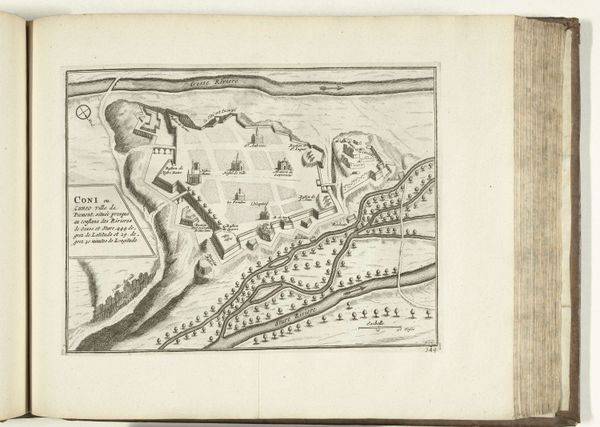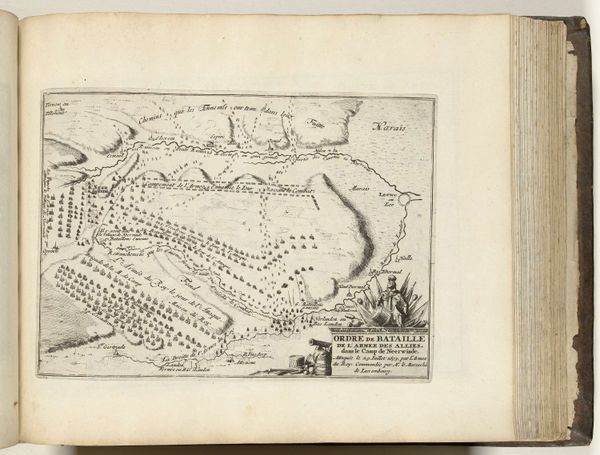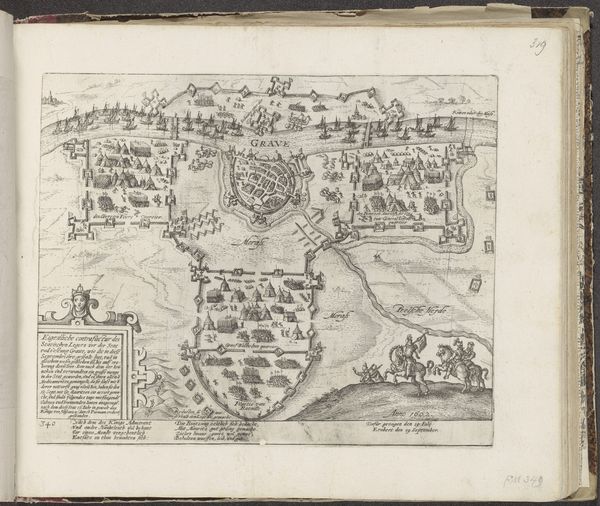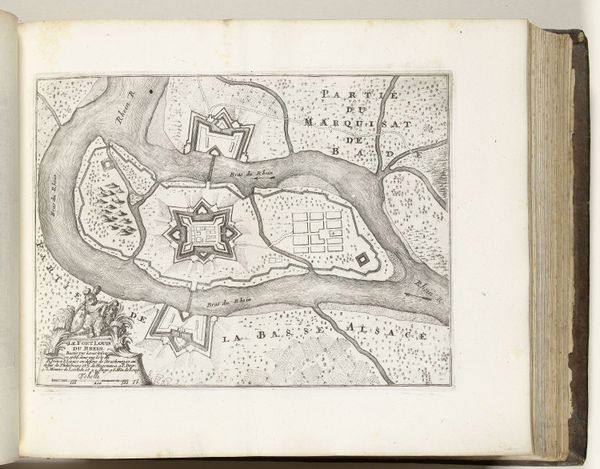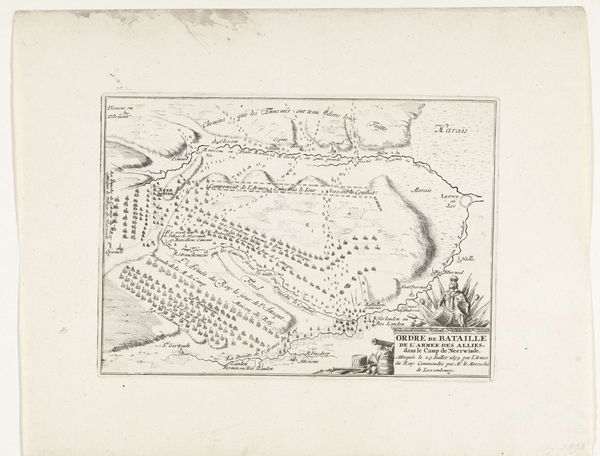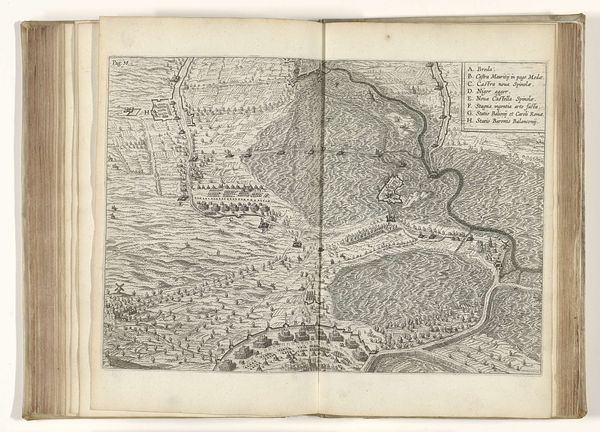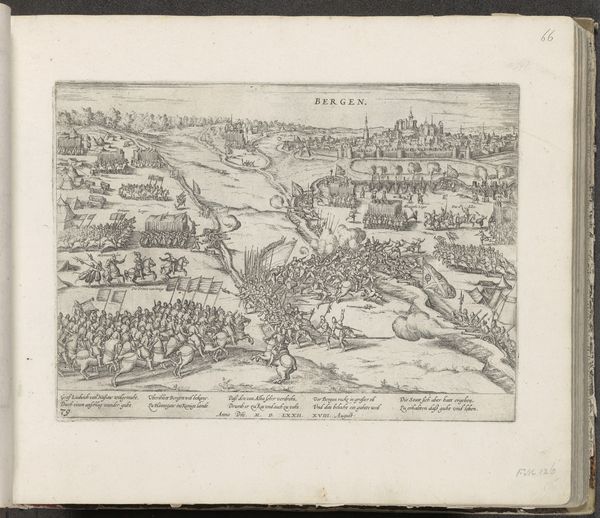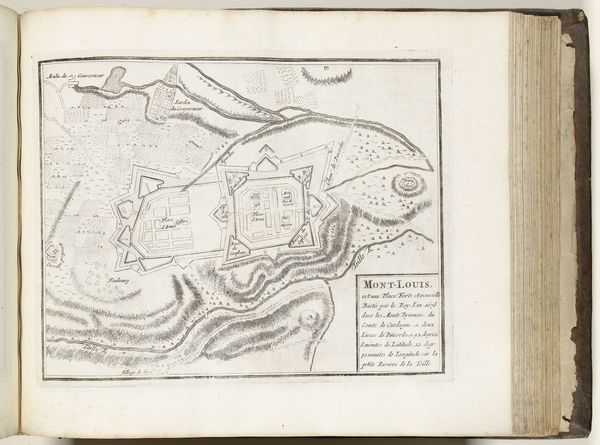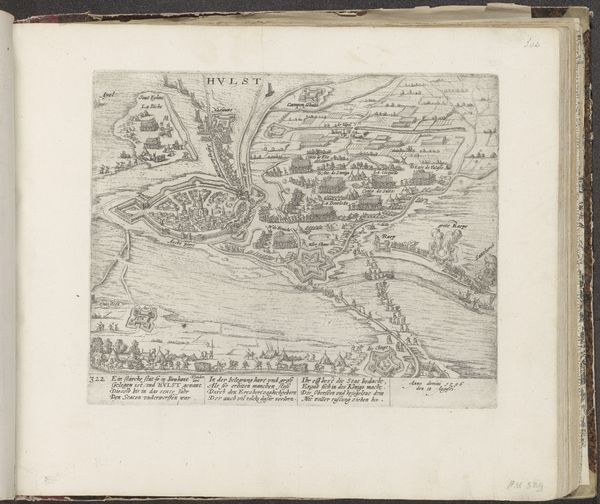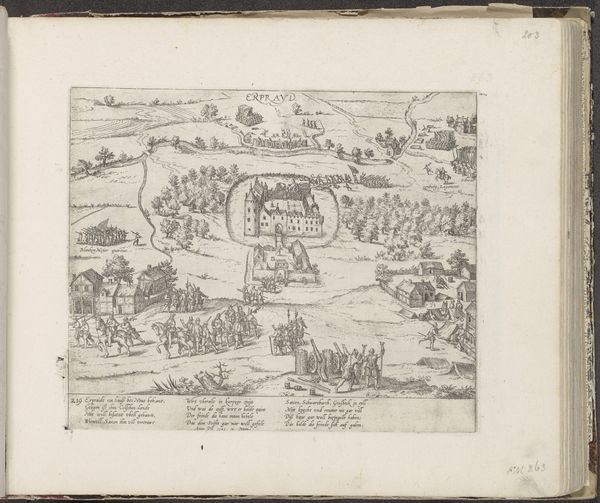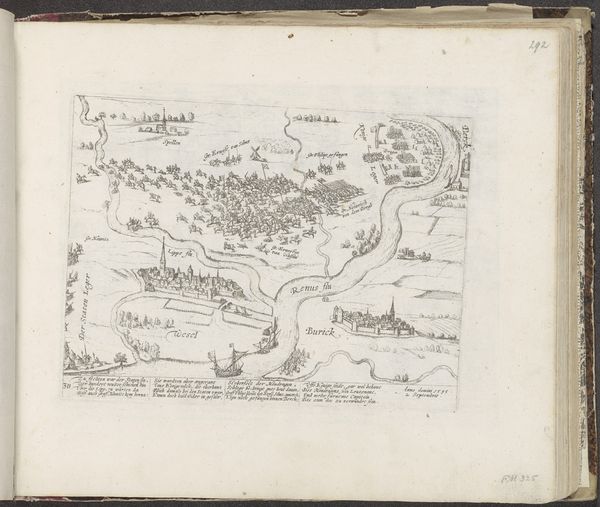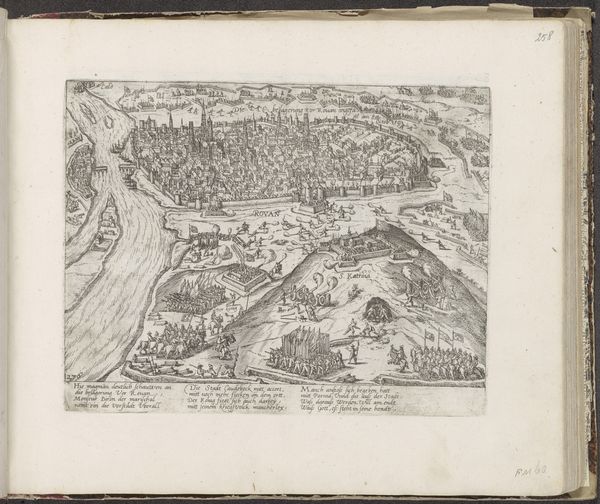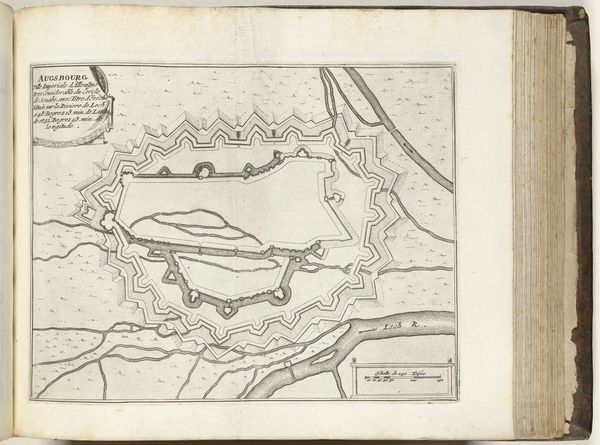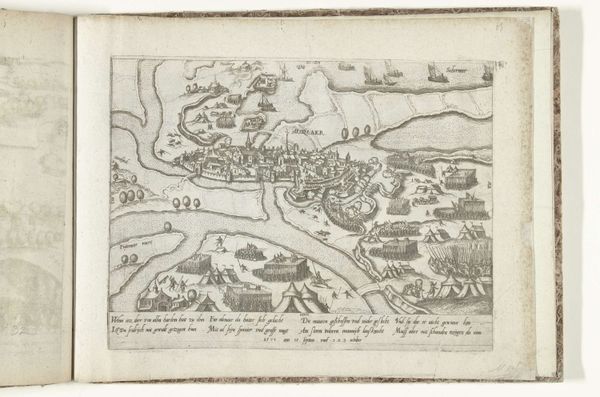
drawing, print, paper, ink, engraving
#
drawing
#
baroque
# print
#
landscape
#
paper
#
ink
#
cityscape
#
history-painting
#
engraving
Dimensions: height 218 mm, width 285 mm
Copyright: Rijks Museum: Open Domain
This is a map of Cuneo, made in 1693 by an anonymous artist. It’s an engraving, created by carefully incising lines into a metal plate, inking it, and then pressing it onto paper. Engraving was a highly skilled, labor-intensive process. It demanded not just artistic ability, but also precision and control over the burin, the tool used to cut the lines. The fineness of the lines gives the map its precision, allowing for a wealth of detail to be packed into a small space. The consistent depth and width of the engraved lines contributes to the map's clarity, making it easy to read despite its age. But this wasn't just a matter of craft. Consider that the engraver was essentially mass-producing an image of strategic importance. These maps weren’t simply aesthetic objects; they were tools of power, aiding in military planning and control of territory. The very act of engraving, with its blend of artistry and technical skill, becomes entwined with the politics of its time, revealing how closely art, craft, and power were interconnected.
Comments
No comments
Be the first to comment and join the conversation on the ultimate creative platform.
